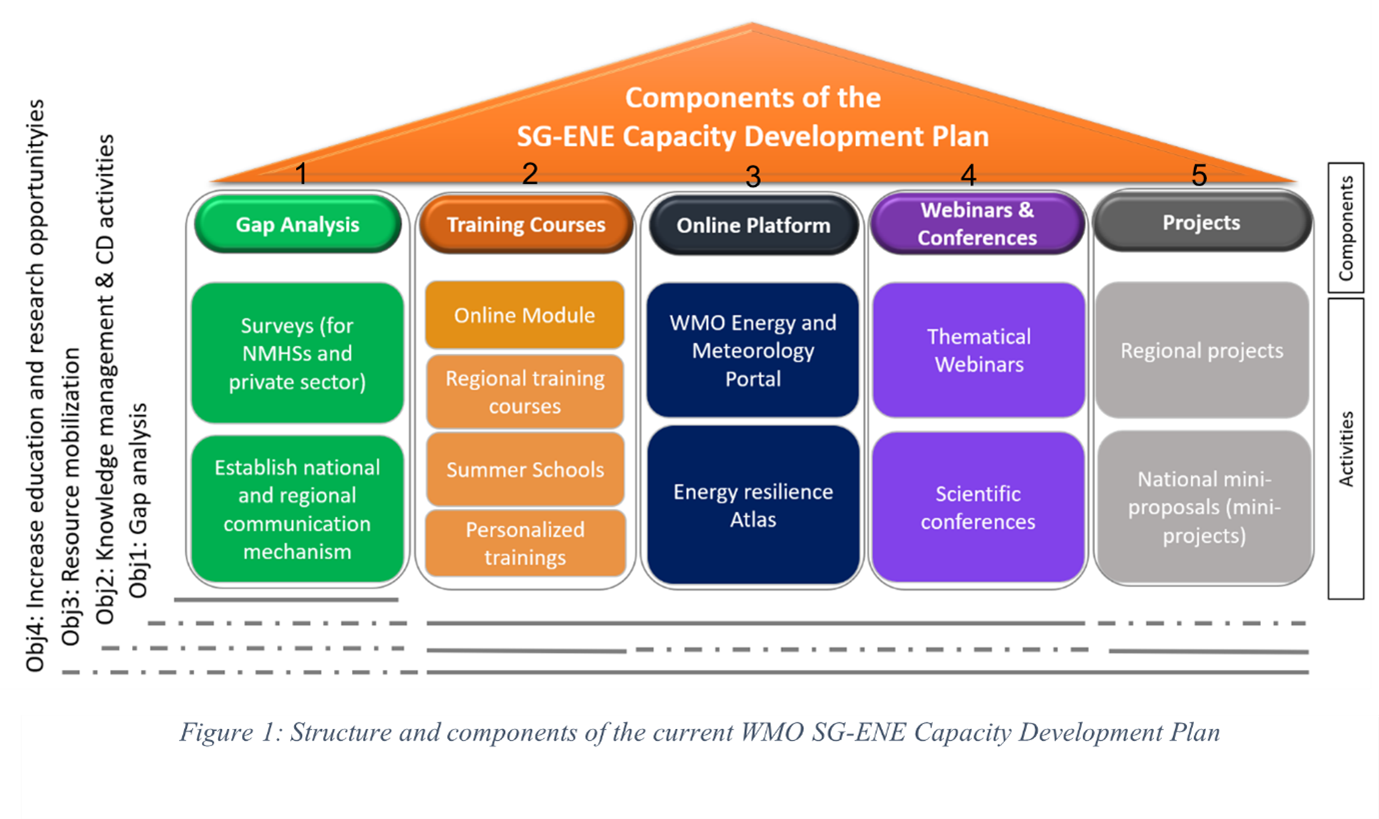SG-ENE Capacity Development Plan (CDP)
Planning and conducting capacity development activities on W&CS application in the energy sector is essential to help strengthen respective skills, abilities, processes, and resources at National Meteorological and Hydrological Services (NMHS), organisations, individuals and communities at national and regional levels. Under the Commission for Weather, Climate, Water, and Related Environmental Services and Application (SERCOM), the SG-ENE is supporting weather and climate services for the energy sector through different activities, including capacity development. The SG-ENE Capacity Development Plan (SG-ENE CDP) provides a 5-year implementation plan to address respective regional and national gaps and needs across the sector. The SG-ENE CDP has, at its core, the WMO’s definition of capacity development, namely “the process of strengthening the abilities or capacities of individuals, organizations and societies to solve problems and meet their objectives on a sustainable basis” (WMO-No.1133, 2015).
The figure below shows five components with respective activities of the SG-ENE CDP by association related objectives to each component through solid lines.

The first component is Gap analysis, aiming to identify key points that require further actions. The second component includes different types of training courses, such as Online course, Regional Course, Summer School, and Expert Training. The third component presents an Online Platform, which facilitates access to actionable knowledge on W&CS in the energy sector and promotes networking between energy actors and W&CS providers. The platform also hosts different materials and activities of other components, such as survey results, training courses, webinar, etc. An important feature of the portal is the Global Energy Resilience Atlas, a newly developed open-access tool, which will allow users from any part of the world to freely explore and download energy-resilience information for different renewable resources. The fourth component includes Energy and Meteorology Conferences and joint Webinars with external partners in response to the energy sector’s weather and climate services needs. Finally, the fifth component is Projects, under which a wide range of technical advisory will be provided to support energy activities in ongoing regional projects and new project proposals will be developed. This component will also address the specific needs of NMHS through small-scale national mini-proposals.
